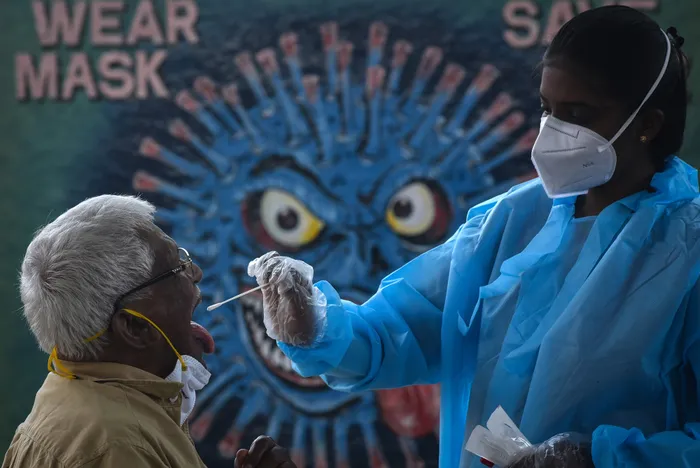There’s no new ‘Centaurus' variant says WHO official

Picture: Idrees Mohammed / EPA-EFE – An Indian health worker collects a Covid-19 swab sample. World Health Organisation (WHO) Africa Regional Virologist, Dr Nicksy Gumede-Moeletsi, has said it is incorrect for the media to refer to the variant as ‘Centaurus’ as the WHO has not given it a Greek name and will not likely do so.
By Kelly Jane Turner
A World Health Organisation (WHO) official has confirmed that there is not a new Covid-19 variant called ‘Centaurus’, but rather that social media has unofficially nicknamed it after the Omicron BA.2.75 sub-variant.
WHO Africa Regional Virologist, Dr Nicksy Gumede-Moeletsi, has said it is incorrect for the media to refer to the variant as ‘Centaurus’ as the WHO has not given it a Greek name and will not likely do so.
“The BA.2.75 is a sub-lineage of an existing variant that has already been named the Omicron variant. The name is not coming from the WHO, it's coming from people on social media,” she said.
The WHO is responsible for labelling Covid-19 variants using the Greek alphabet.
The Omicron sub-variant was first detected in India last month and has since been found in over ten countries, including the United Kingdom (UK), The United States (US), Australia, Germany and Canada.
A Twitter user, Xabier Ostale nicknamed the Omicron sub-variant BA.2.75 as “Centaurus” last week after a galaxy.
“Why to name or nickname variants of Sars2. It's simple. People will understand much better nicknames than letters and numbers, their perception of the different sub-variants is a mess,” he said in a series of Tweets.
Gumede-Moeletsi said the BA.2.75 sub-variant was first reported in India and it seems that it is beginning to “outcompete” the existing dominating strains in the country, which are the BA.4 and BA.5 strains.
“We are gonna see changes of the sub-variants that are arising, because the virus is going to keep mutating and the more transmissible variants will start to emerge.”
“It's also an indication that the new sub-lineage is having more characteristics that are stronger than the previous ones in terms of transmissibility and severity,” she said.
🧵 Why to name or nickname variants of sars2
— Xabier Ostale (@xabitron1) July 12, 2022
1/5
It's simple.
People will understand much better nicknames than letters and numbers, their perception of the different subvariants is a mess.
Like, for instance, BA.5.3.1 subvariant (nicknamed Bad Ned).